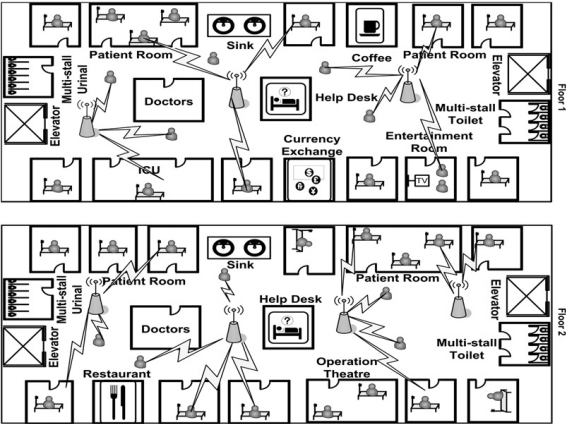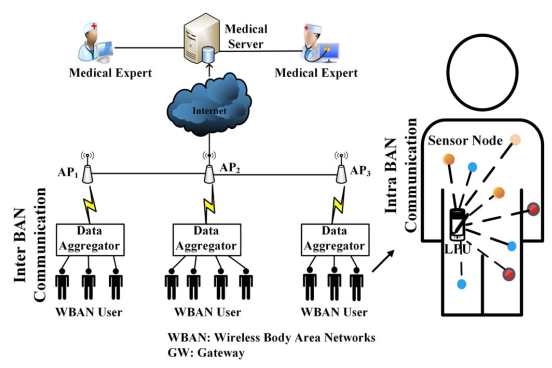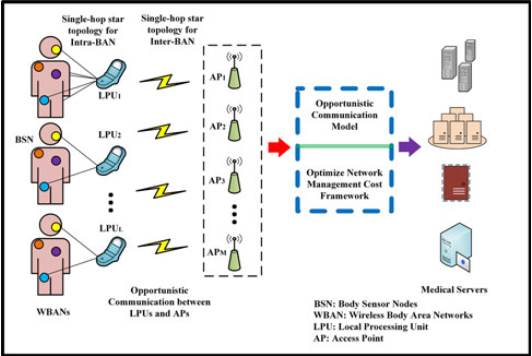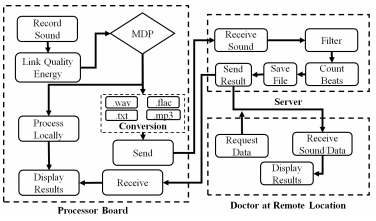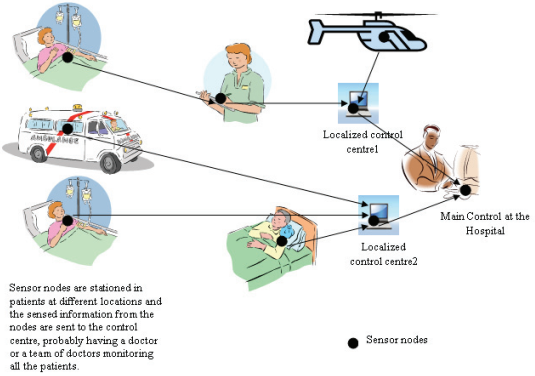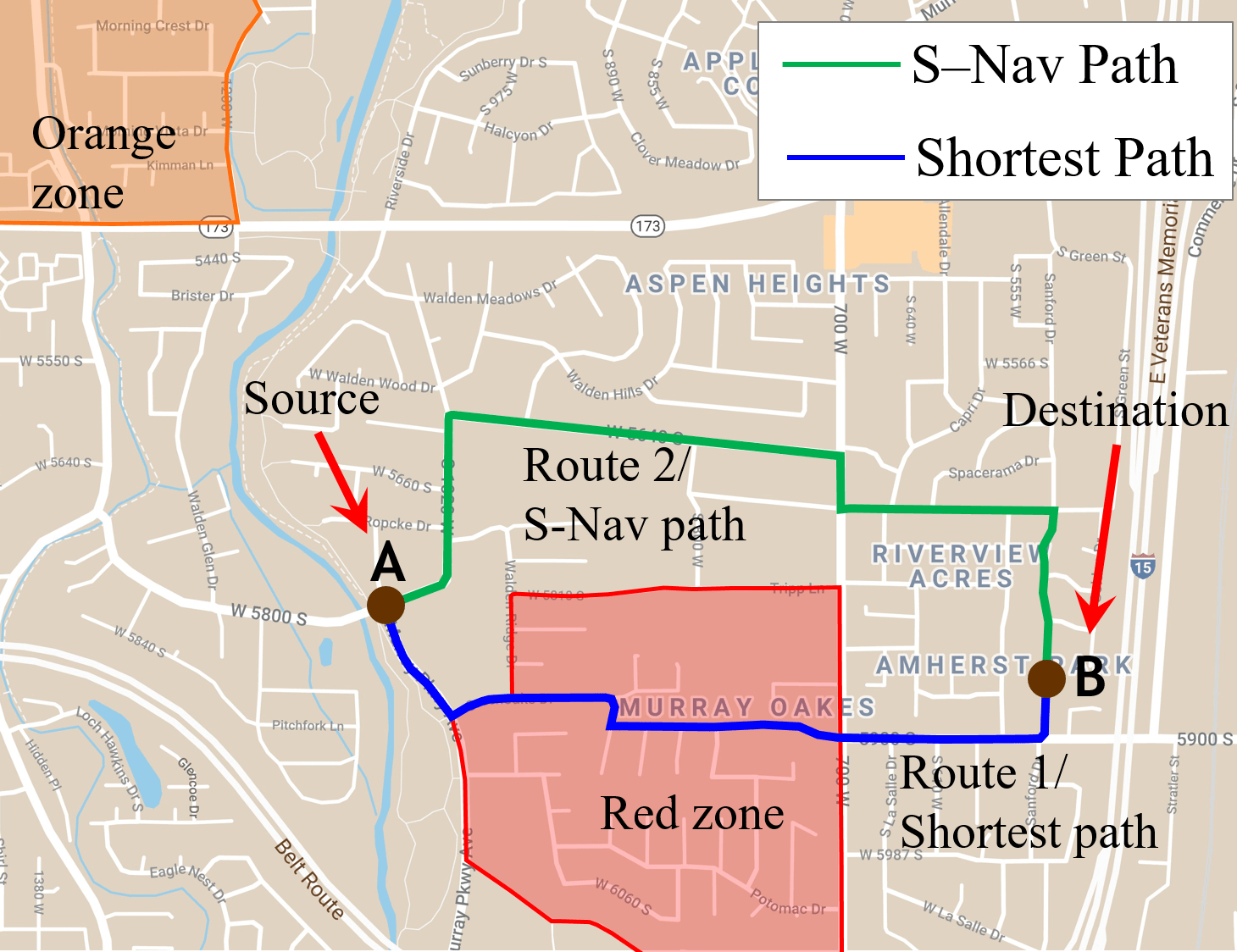QoS improvement of WBAN
Datarate Tuning
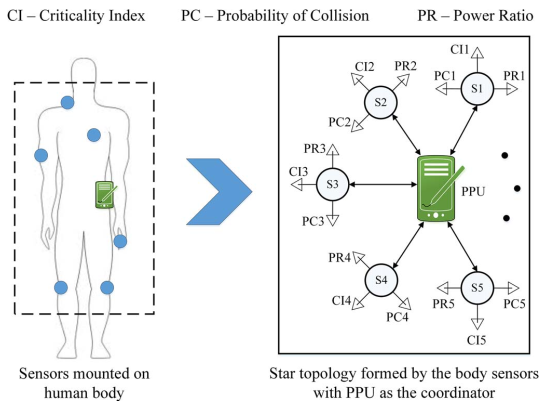
This work proposed a cooperative game theoretic approach for data-rate tuning among sensors in a Wireless Body Area Network (WBAN).
Read More PDF CitationMAC-Frame Payload Tuning
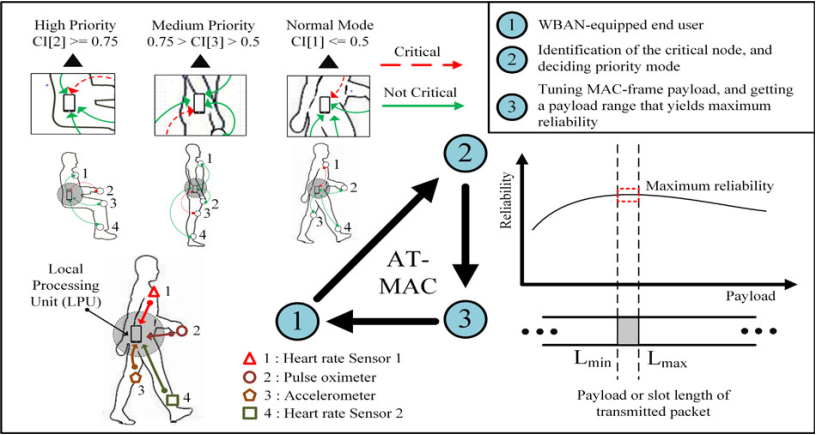
This work proposed an enabling algorithm - Adaptively Tuned MAC (AT-MAC), to tune the MAC-frame payload of a WBAN sensor node to maximize the probability of successful packet delivery or reliability of the associated sensor nodes based on real-time situation.
Read More PDF CitationDynamic Connectivity Establishment
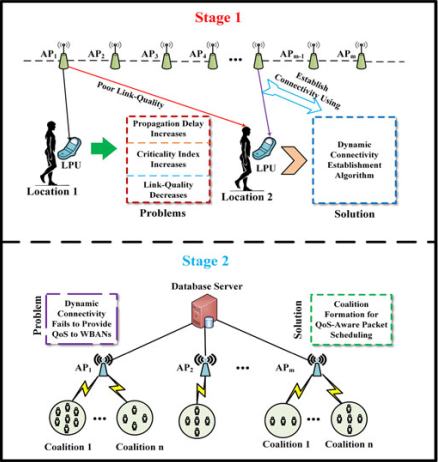
This work addressed the connectivity problem between a WBAN and an Access Point (AP) dynamically, and provided Quality of Services (QoS) in the network. The proposed dynamic connectivity establishment and cooperative scheduling scheme, minimized the packet delivery delay and maximized the network throughput.
Read More CitationAnalysis of IEEE 802.15.6
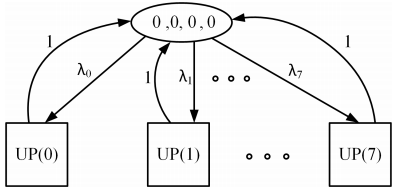
In this work, we developed a discrete-time Markov model for the accurate analysis of reliability and throughput of an IEEE 802.15.6 CSMA/CA-based WBAN under saturation condition.
Read More PDF CitationWBAN Scheduling

In this work, we addressed the problem of interference when multiple time division multiple access-based wireless body area networks (WBANs) come in the proximity of one another. We propose a simple solution that creates common non-conflicting schedule between these interfering WBANs.
Read More PDF CitationFlow Scheduling
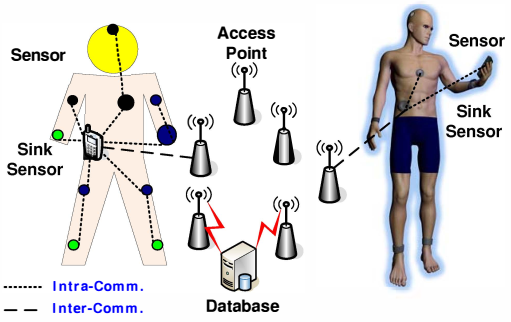
This work studied the distributed flow scheduling with heterogeneous delayed control information (DCI) for wireless body sensor networks (WBSNs) which is designed based on perfect control channels where the instantaneous control information from the neighbors is available.
Read More CitationPriority-based Time-Slot Allocation
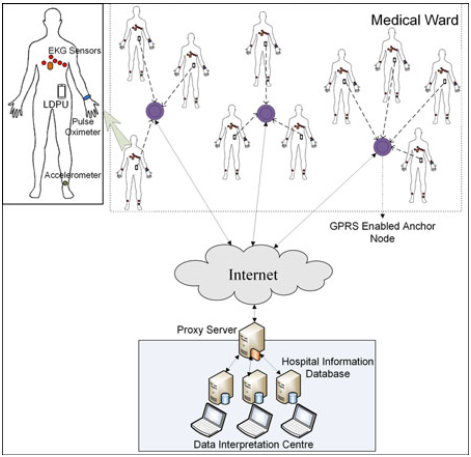
This work formulated an algorithm for Priority-based Allocation of Time Slots (PATS) that considers a fitness parameter characterizing the criticality of health data that a packet carries, energy consumption rate for a transmitting LDPU, and other crucial LDPU properties.
Read More PDF CitationCloud-Assisted WBAN

This work focused on two fundamental research issues in the context of cloud-assisted Wireless Body Area Network (WBAN) – aggregation of health data transmitted by the Local Data Processing Units (LDPU)s within the mobile monitoring nodes, and channelization of the aggregated data by dynamic selection of the cloud gateways.
Read More PDF CitationDisease-Centric Healthcare Management System
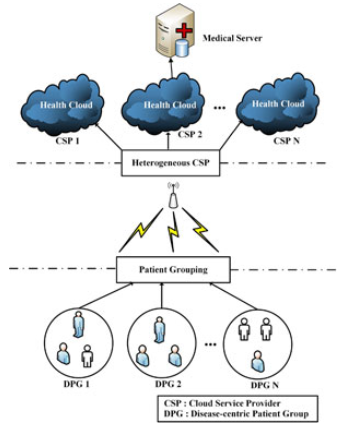
This work proposed a disease-centric health-care management system using wireless body area networks (WBAN) in the presence of multiple health-cloud service providers (H-CSP) to manage the increased traffic load and to provide ubiquitous medical services.
Read More PDF CitationWBAN Selection

This work proposed a scheme for the selection of critical WBANs to minimize the load of the WBANs in a particular area in a epidemiological medical situation.
Read More Citationi-MAC
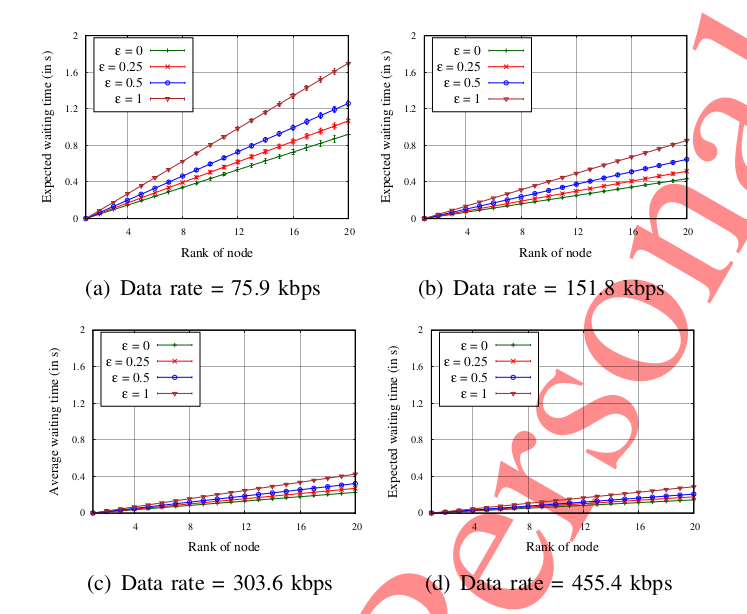
This article proposes a novel energy-efficient medium access control (MAC) protocol for IEEE 802.15.6 standard complaint in-body sensor-based WBAN. It incorporates a modified superframe structure, in which separate access phases are introduced for the emergency event and regular event. In case of an emergency event, a novel emergency event handling scheme and a ranking and priority assignment (RPA) protocol is proposed to detect and address the critical event of in-body sensors.
Read More PDF CitationEnabling Green Mobile Edge Computing for 5G-Based Healthcare Applications

In this paper, we focus on joint cost and energy-efficient task offloading in the MEC-enabled healthcare system by designing incentives for WBAN users to curtail their amount of task offloading. In particular, we model the interaction among the MEC server and WBAN users using the Stackelberg game and derive the optimal task offloading decision for WBAN users and corresponding reimbursement amount. As the number of WBAN users is large, we propose an alternating direction method of multipliers (ADMM)-based algorithm to achieve the optimal solution in a distributed manner.
Read More PDF CitationTowards Energy-and Cost-Efficient Sustainable MEC-Assisted Healthcare Systems
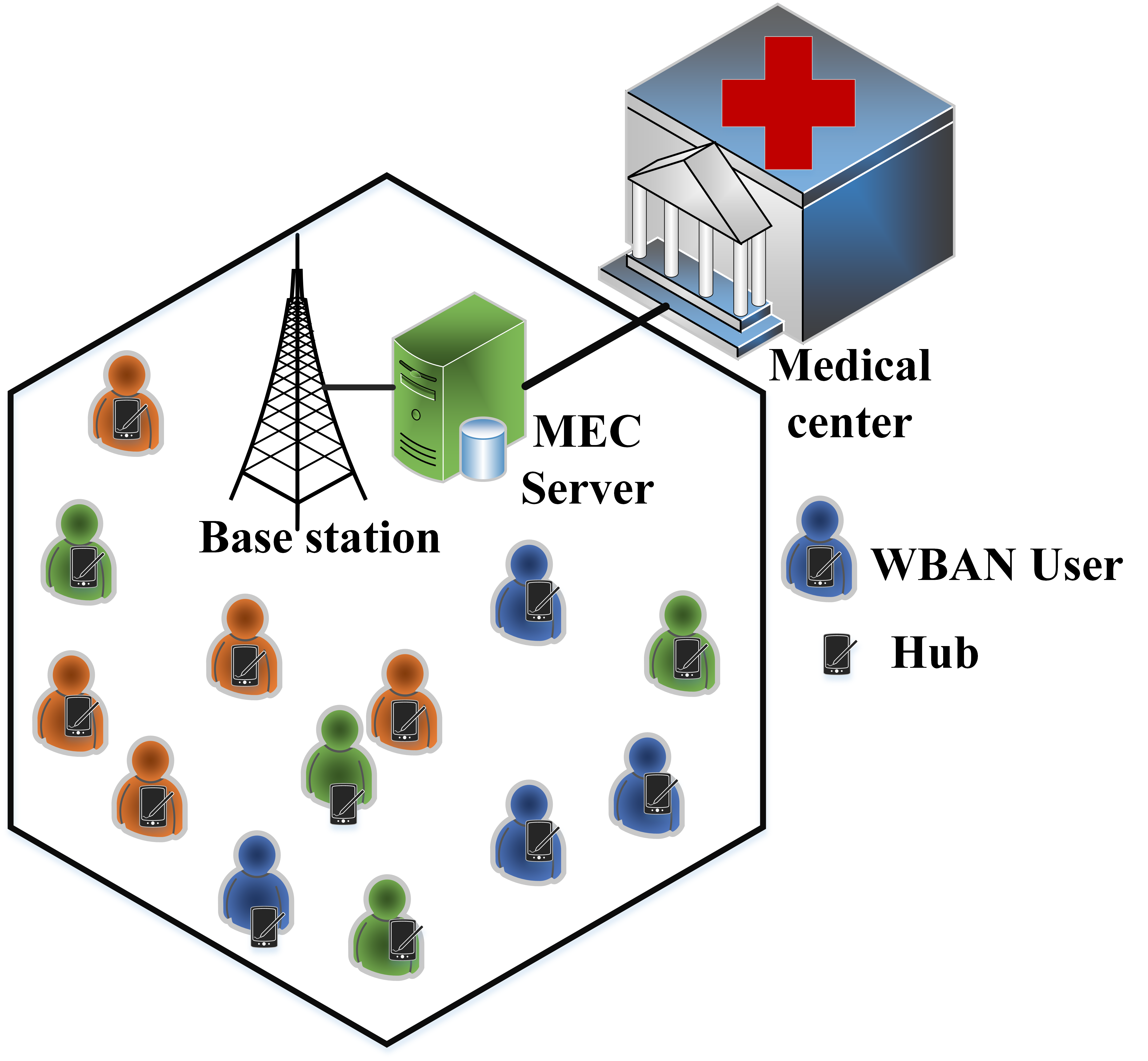
In this work, we propose a resource management scheme, which minimizes the energy consumption of the MEC server without compromising on the quality-of-experience (QoE) of the WBAN users. For that, we propose a cooperative framework between the MEC server and WBAN users, where the MEC server motivates WBAN users to opt for partial offloading instead of full offloading of the computing services. The WBAN users decide the portion of the task they opt for local computing and the portion they opt for offloading. Based on the local computing task amount, the MEC server offers reimbursement to WBAN users. We model this economic interaction between the MEC server and all the participating WBAN users using the Nash bargaining theory. Thereafter, we derive the closed-form Nash bargaining solutions (NBS) for two different bargaining protocols. Numerical results show that the proposed bargaining protocol is Pareto-efficient, fair, and offers better payoffs to both the MEC server and all the WBAN users compared to the existing benchmark schemes.
Read More PDF CitationResource Allocation for WBAN
Cloud Resources Distribution

The problem of multiple tenant organizations contending for a finite set of cloud resources is addressed. In critical situations of medical emergencies, fair and optimal distribution of cloud resources is crucial. For such scenarios, this work proposed resource allocation algorithm to maximize the individual incentives of the organization only by acting truthfully.
Read More PDF CitationMapping-Based Allocation
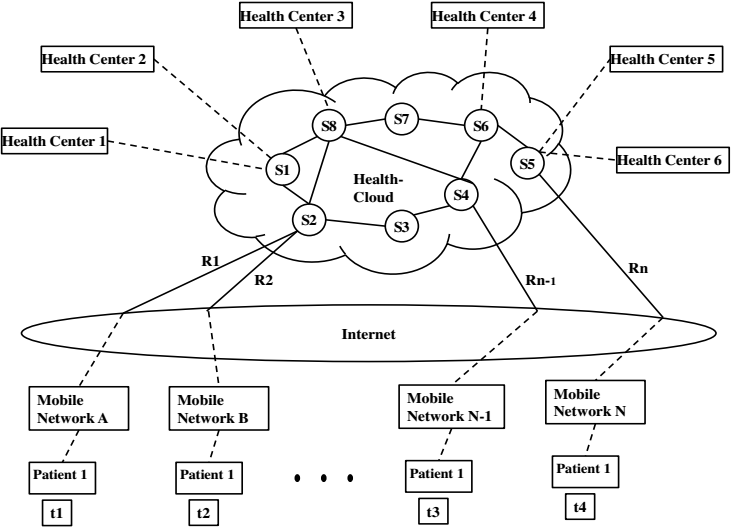
This article proposes an optimal resource allocation framework for health-cloud to monitor patients’ health conditions when they change locations. To optimize the resource allocation problem and provide an optimum mapping between the mobile node and the server, they use an auction theory based solution approach.
Read More PDF CitationGateway Selection
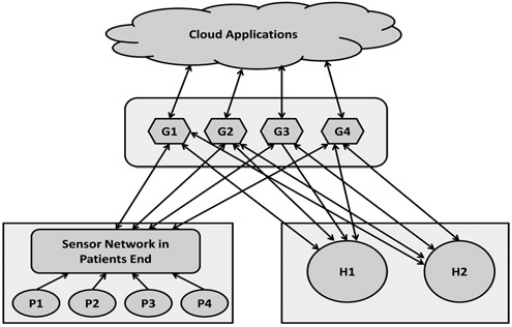
This article studied the optimal gateway selection problem in sensor–cloud framework for real-time patient monitoring system by using a zero-sum game model. They evaluated the execution time for selecting the optimal gateway through which the sensed data will be fetched to the cloud platform.
Read More PDF CitationCollaborative Data Uploading
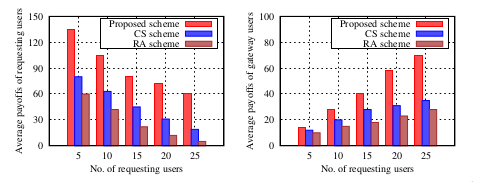
This article formulates a Stackelberg game, where the requesting users as leaders propose the prices, and the gateway users as followers decide the amount of requesting users’ data they would upload. This article also proves the existence of Stackelberg equilibrium of the game using backward induction.
Read More PDF CitationDistributed Resource Allocation for Collaborative Data Uploading in Body-to-Body Networks
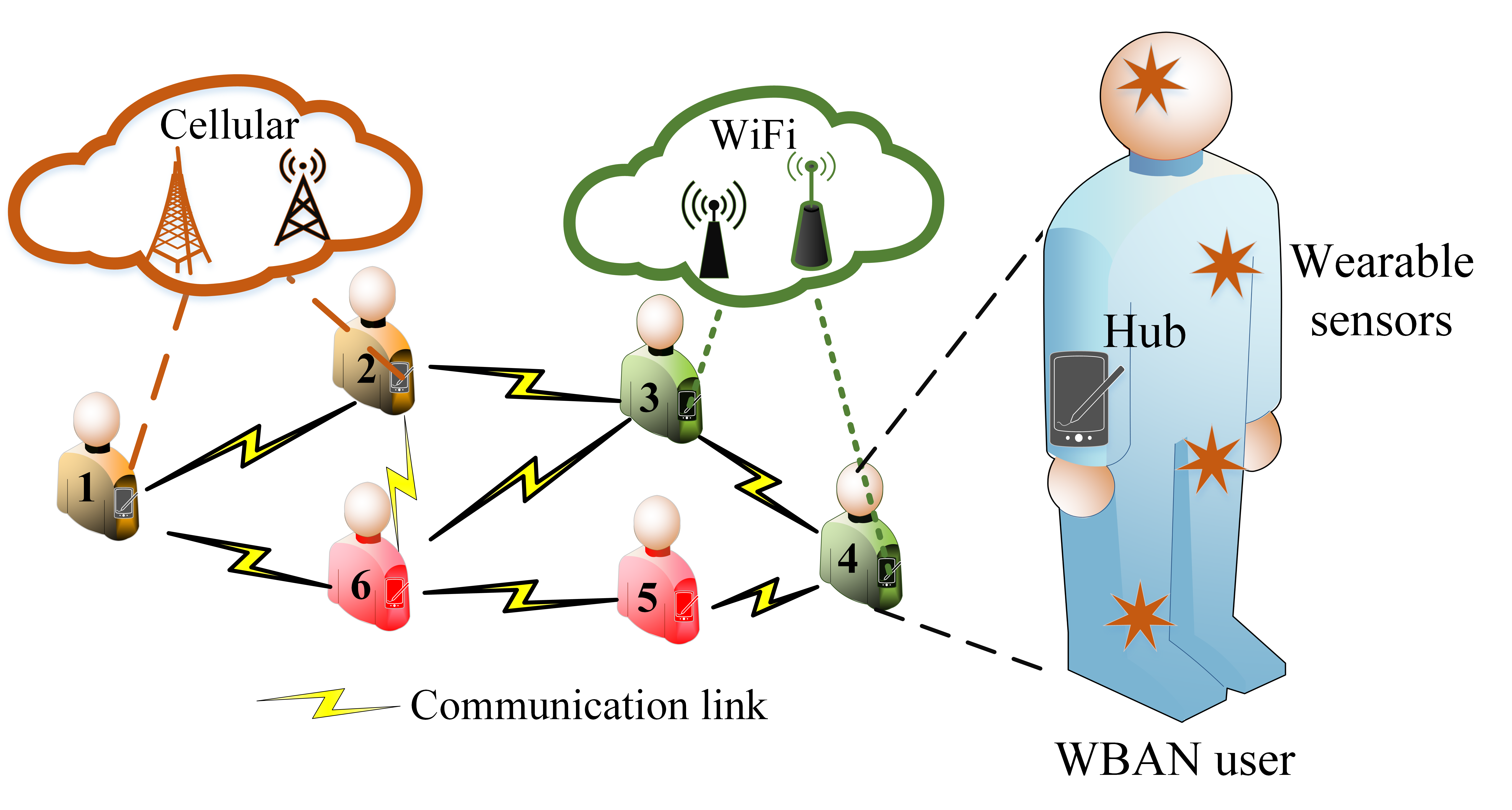
In this paper, we study a body-to-body network (BBN) framework, which enables wireless body area network (WBAN) users located in close proximity to cooperate and share their network resources to improve the overall network performance. Our main aim is to design a distributed resource allocation mechanism that encourages each participating WBAN user to participate and upload each other’s data collaboratively. We propose an auction-based mechanism that optimizes data uploading for all participating users and the corresponding reimbursement.
Read More PDF CitationPriority-Aware Cooperative Data Uploading in Body-to-body Networks for Healthcare IoT
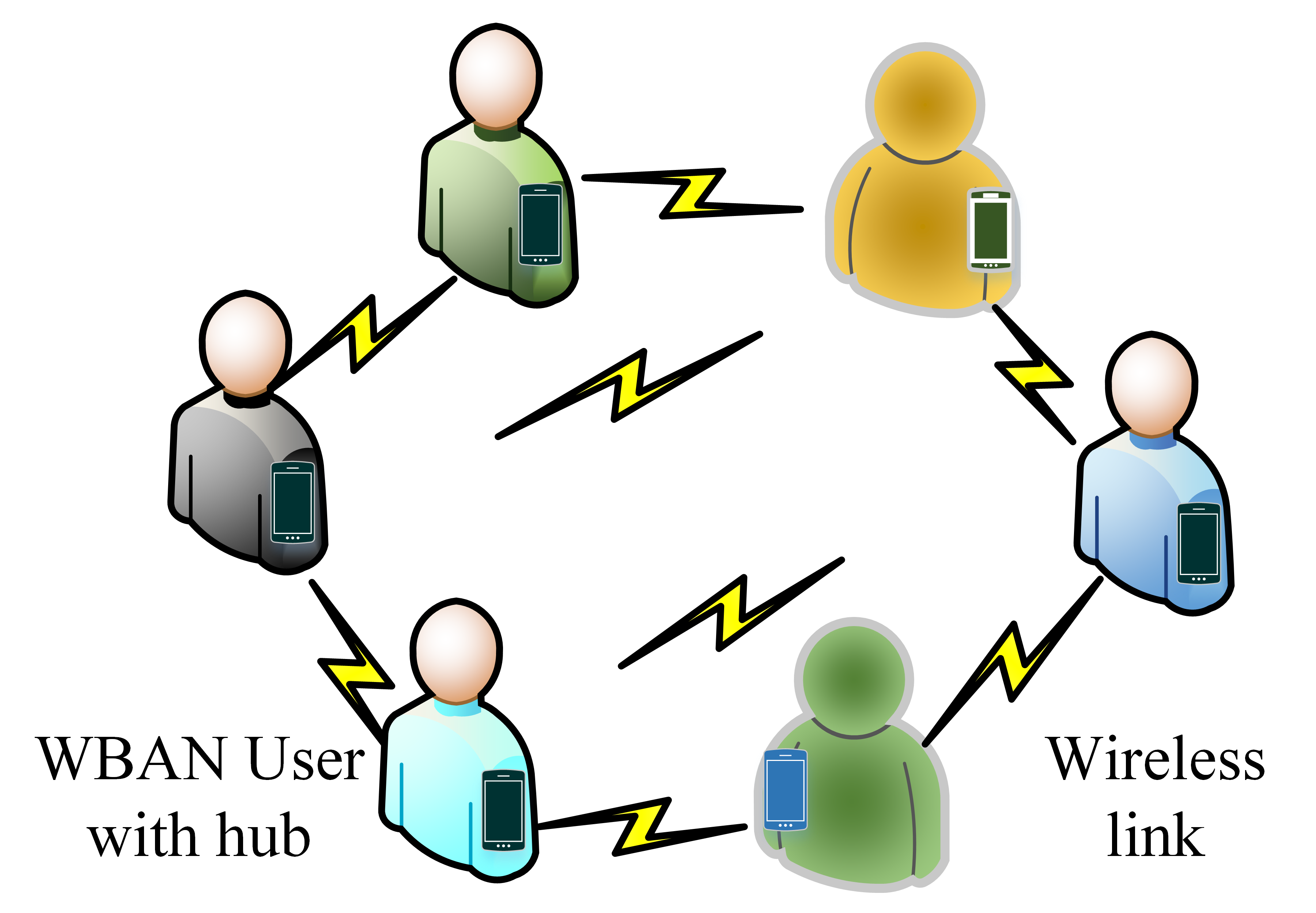
In this work, we propose an incentive scheme based on contract theory, to model the economic interaction between the gateway and requesting WBAN users and ensure priority-aware data uploading in BBN. First, the requesting WBAN users are categorized into different types based on their data priority. Thereafter, we formulate a contract design problem to maximize the payoff of gateway WBAN user while satisfying the requirements of requesting users.
Read More PDF CitationCollaborative and Efficient Body-to-Body Networks for IoT-Based Healthcare Systems
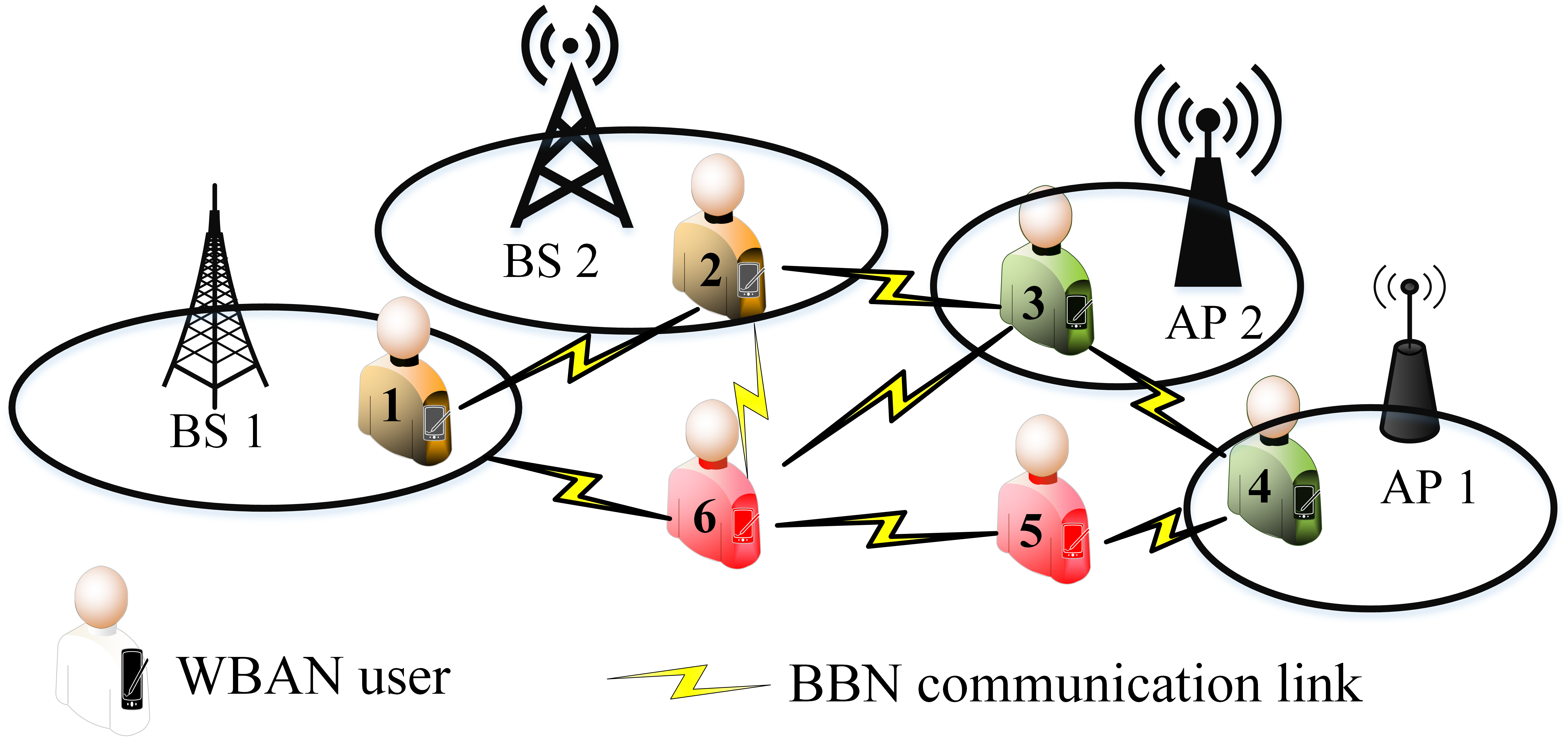
In this paper, we proposed a BBN framework and analyzed the resource sharing problem among heterogeneous WBAN users. In BBN, each WBAN not only utilizes its resources (uplink capacity and battery energy) to upload physiological data, but also trades resources with other participating WBANs. Specifically, WBAN users with unused resources trade with other users deprived of Internet connection and low battery for mutual gain. Since WBAN users have individual decision making capability and are self-centric in nature, they always aim to maximize their own performance while expecting benefits through resource sharing. Therefore, we model this interaction as an $ N $-person bargaining game and design a Nash bargaining solution (NBS)-based incentive mechanism to facilitate user cooperation. The proposed mechanism ensures efficient resource sharing and fair division of mutual benefit among the participating WBAN users. Also, we propose a distributed algorithm for the practical implementation of the proposed mechanism in decentralized BBN.
Read More PDF CitationEnergy Consumption Model for WBAN
Payload Tuning Mechanism
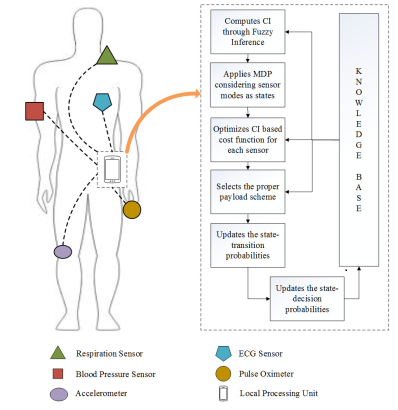
This work presented a priority-based MAC-frame payload tuning mechanism with reduced energy consumption for healthcare systems that use Wireless Body Area Networks (WBANs).
Read More PDF CitationWSN-based Healthcare System
Mobile-based System
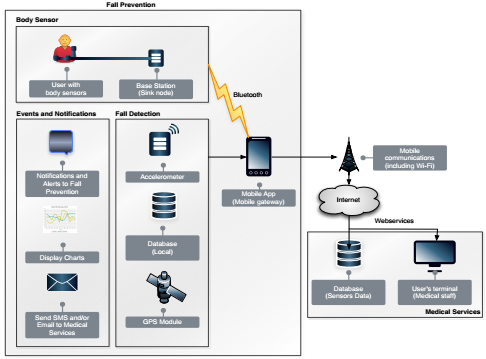
This article reviews the related literature about this topic and introduces a mobile solution for falls prevention, detection, and biofeedback monitoring.
Read More CitationPrivacy-Aware System
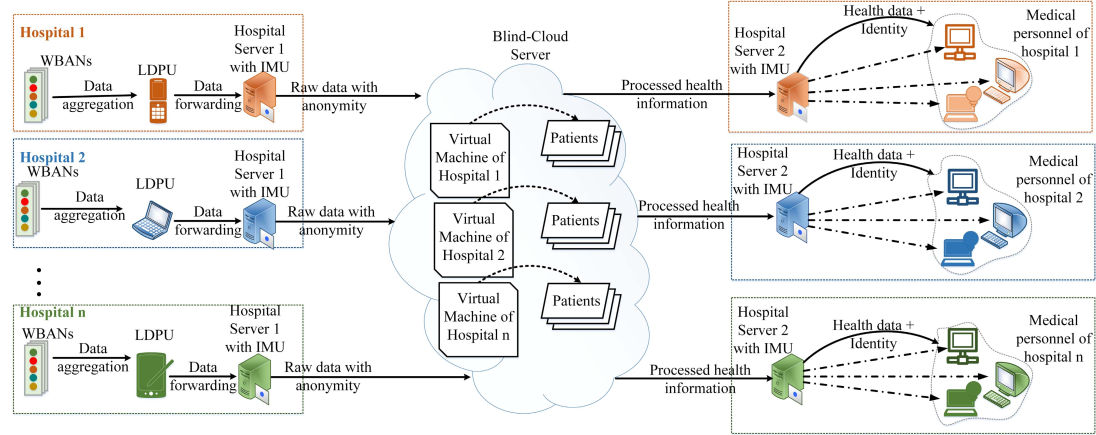
This article proposed a novel privacy-aware “blind” cloud infrastructure to be utilized for storage, processing, and organization of health data to make the cloud platform “blind” forcibly and yet take the advantage of the enormous computing and storage abilities of such servers.
Read More PDF CitationHeDI: Healthcare Device Interoperability for IoT-Based e-Health Platforms
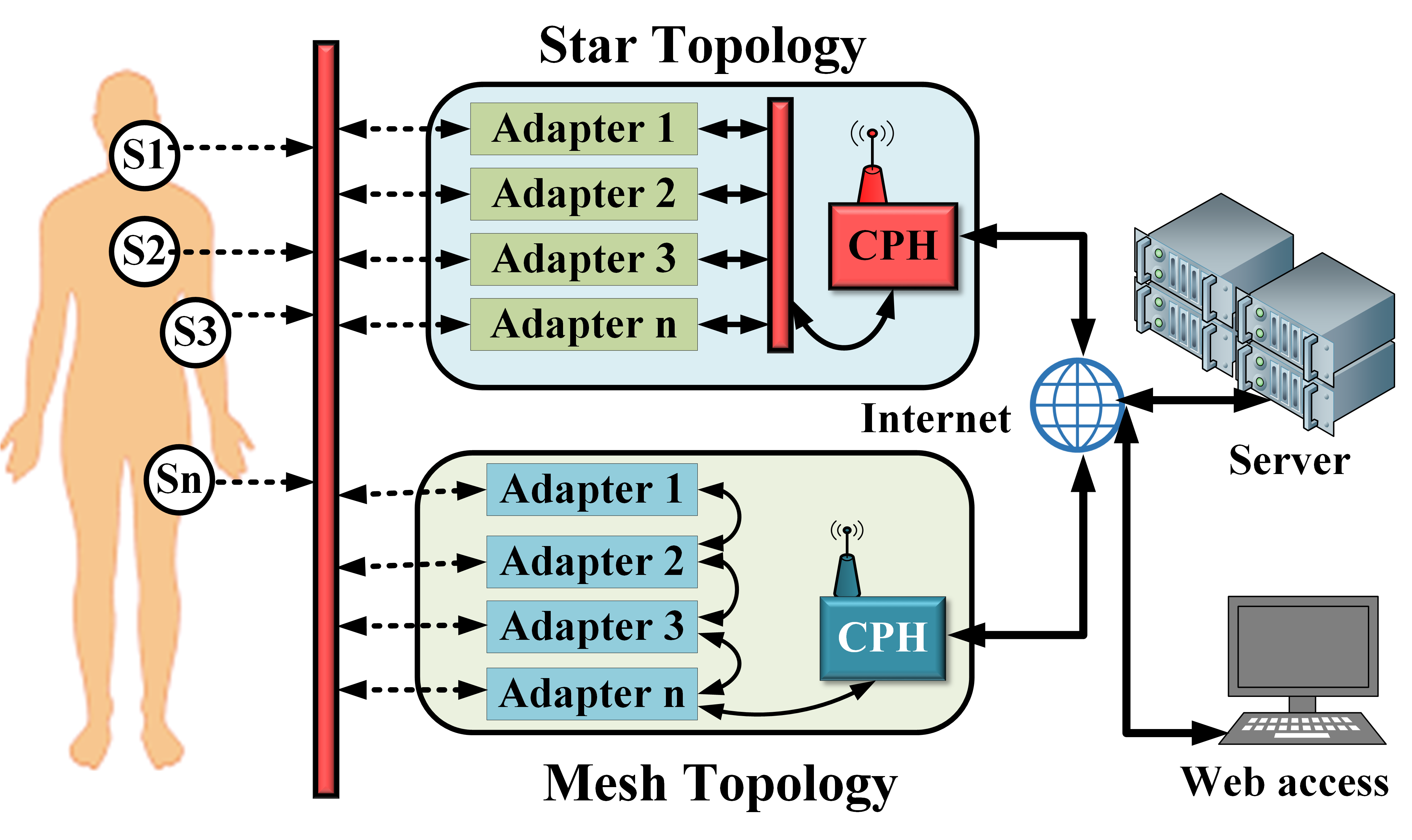
In this work, we propose and develop HeDI (Healthcare Device Interoperability) – a system to enable device interoperability in IoT-enabled in-home healthcare monitoring platforms. The system is scalable and dynamically accommodates multiple sensors without any predefined ontologies at the edge device.
Read More PDF CitationReconfigure and Reuse: Interoperable Wearables for Healthcare IoT
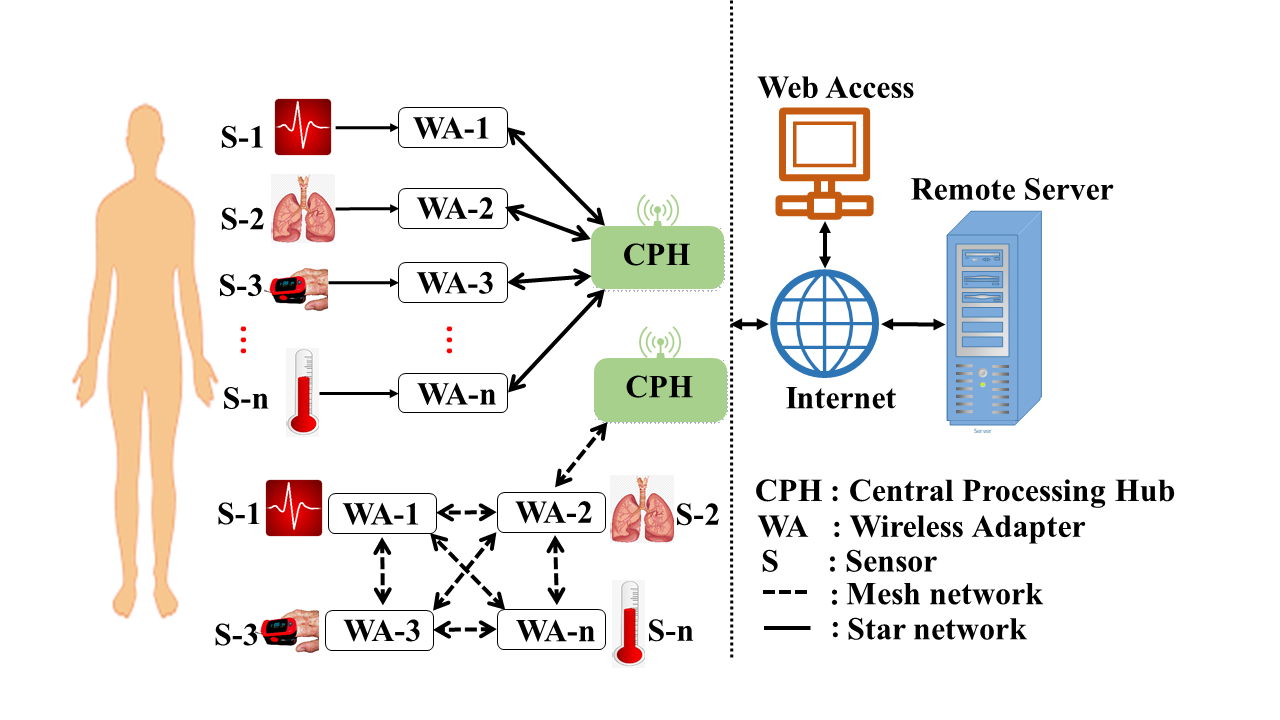
In this work, we propose Over-The-Air (OTA)-based reconfigurable IoT health-monitoring wearables, which tether wirelessly to a low-power and portable central processing and communication hub (CPH). This hub is responsible for the proper packetization and transmission of the physiological data received from the individual sensors connected to each wearable to a remote server. Each wearable consists of a sensor, a communication adapter, and its power module. We introduce low-power adapters with each sensor, which facilitates the sensor-CPH linkups and on-demand network parameter reconfigurations. The newly introduced adapter supports the interoperability of heterogeneous sensors by eradicating the need for sensor-specific modules through OTA-based reconfiguration. The reconfiguration feature allows for new sensors to connect to an existing adapter, without changing the hardware units or any external interface. The proposed system is scalable and enables multiple sensors to connect in a network and work in synchronization with the CPH to achieve semantic and device interoperability among the sensors. We test the implementation in real-time using three different health-monitoring sensor types - temperature, pulse oximeter, and ECG. The results of our real-time system evaluation depict that the proposed system is reliable and responsive in terms of the achieved packet delivery ratio, received signal strength, and energy consumption.
Read More PDF Citationi-Sheet: A Low-Cost Bedsheet Sensor for Remote Diagnosis of Isolated Individuals

In this paper, we propose --i-Sheet-- that senses the movement of the person to determine their condition during and after COVID-19. i-Sheet senses the pressure exerted by the patients, and based on that pressure, we determine whether they are in a comfortable state or not. The smart bedsheet sends the data related to the patient for remotely monitoring the health. We utilize the machine learning model to categorize the data of stable and unstable patients. On the basis of this data, the caretaker or the healthcare gets alerts and remotely monitors the health of the patient.
Read More PDF CitationRouting in Healthcare System
Context-Aware Multi-hop Routing

This paper presents a context-aware Personal Area Network (PAN) coordinator selection algorithm - CAPCoS, for real-time acquisition of physiological data of soldiers in battle-field. In this work, we consider three criteria such as - successful delivery of data packets at sink, cooperation among different hops during multi-hop routing, and health severity of individual soldiers.
Read More PDF CitationCriticality-Aware Routing
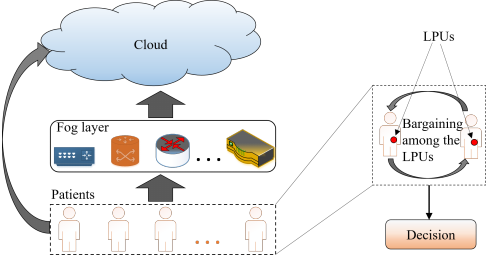
This article proposes a criticality aware data transmission scheme in CPS-based healthcare systems for increasing the processing rate of the sensed physiological parameters’ values of a patient. It considered a fog computing based architecture in order to reduce the latency of data processing of a critical patient.
Read More PDF CitationSoft-Health: Software-Defined Fog Architecture for IoT Applications in Healthcare

In this article, we propose a software-defined fog architecture, named as Soft-Health, to serve various Internet-of-Things (IoT)-based healthcare applications. The health conditions of the patients fluctuate over time. Further, specialized medical care may not always be available in all healthcare facilities. The use of wireless body area network (WBAN) for continuous patient monitoring addresses the issue to a certain extent. However, as the physiological parameters of a patient are time-critical in nature, any delay, packet loss, and network overhead, may result in deterioration of the patient’s health conditions. Considering this, we design a Software-defined fog-enabled IoT platform for various healthcare applications. We consider that the fog layer comprises SDN switches that allocate the packet to the appropriate fog/cloud depending upon the criticality index (CI) of the data packets originating from patients. We mathematically formulate the CI, based on the physiological parameters sensed and transmitted to the switches. Further, we design an optimization function to obtain the maximum utility of a fog node, for an optimal number of processes executed by that node. We apply the Lagrangian method to simplify the optimization function and solve it using Karush–Kuhn–Tucker (KKT) conditions. We apply the auto-regression model to predict the total delay incurred and the total energy consumed by the proposed scheme.
PDFIoT for COVID-19
CovChain: Blockchain-Enabled Identity Preservation and Anti-Infodemics for COVID-19
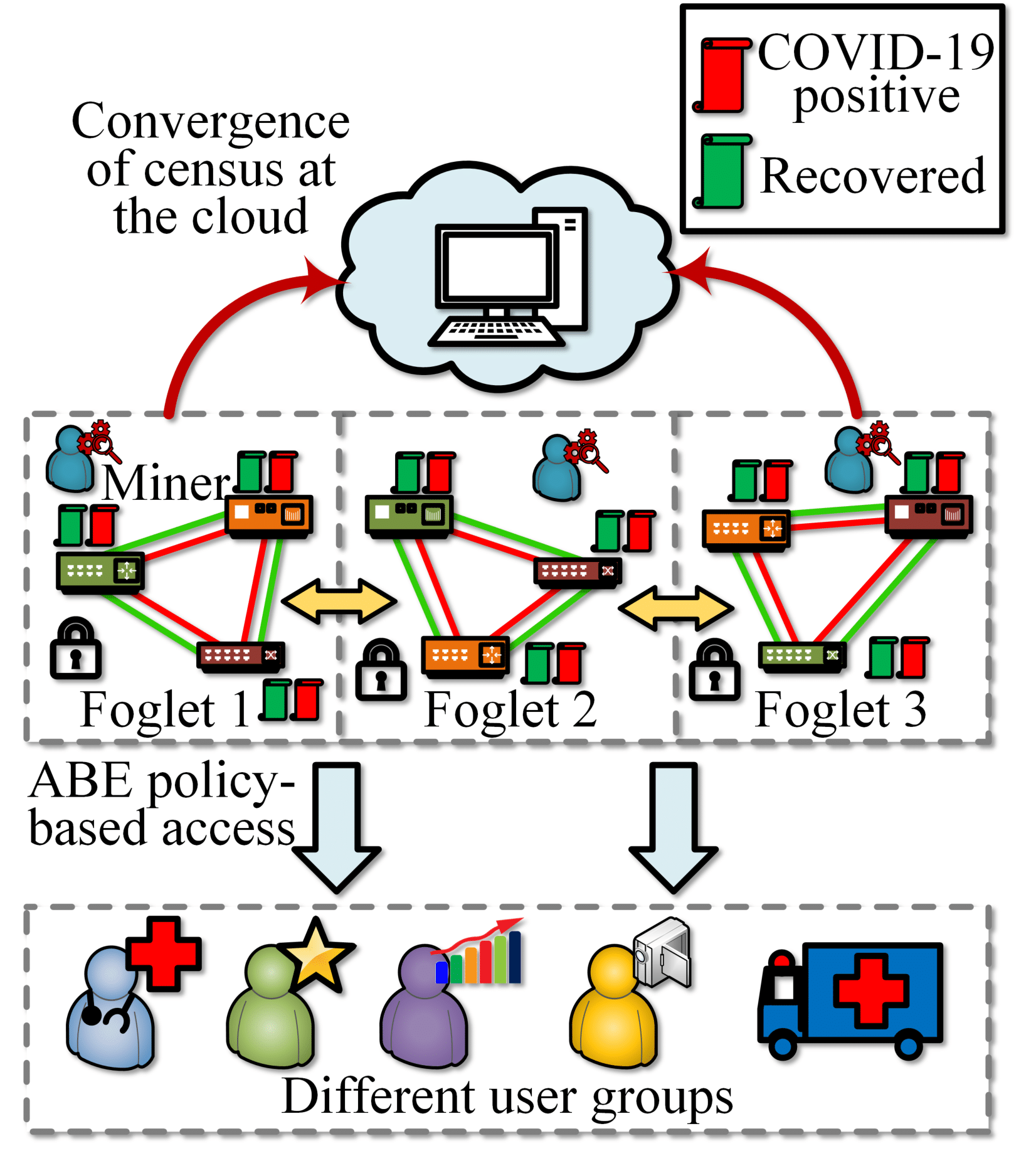
This paper presents a context-aware Personal Area Network (PAN) coordinator selection algorithm - CAPCoS, for real-time acquisition of physiological data of soldiers in battle-field. In this work, we consider three criteria such as - successful delivery of data packets at sink, cooperation among different hops during multi-hop routing, and health severity of individual soldiers.
Read More PDF CitationContaining the Spread of COVID-19 with IoT: A Visual Tracing Approach

This article proposes a criticality aware data transmission scheme in CPS-based healthcare systems for increasing the processing rate of the sensed physiological parameters’ values of a patient. It considered a fog computing based architecture in order to reduce the latency of data processing of a critical patient.
Read More PDF CitationIoT-to-the-Rescue: A Survey of IoT Solutions for COVID-19-Like Pandemics
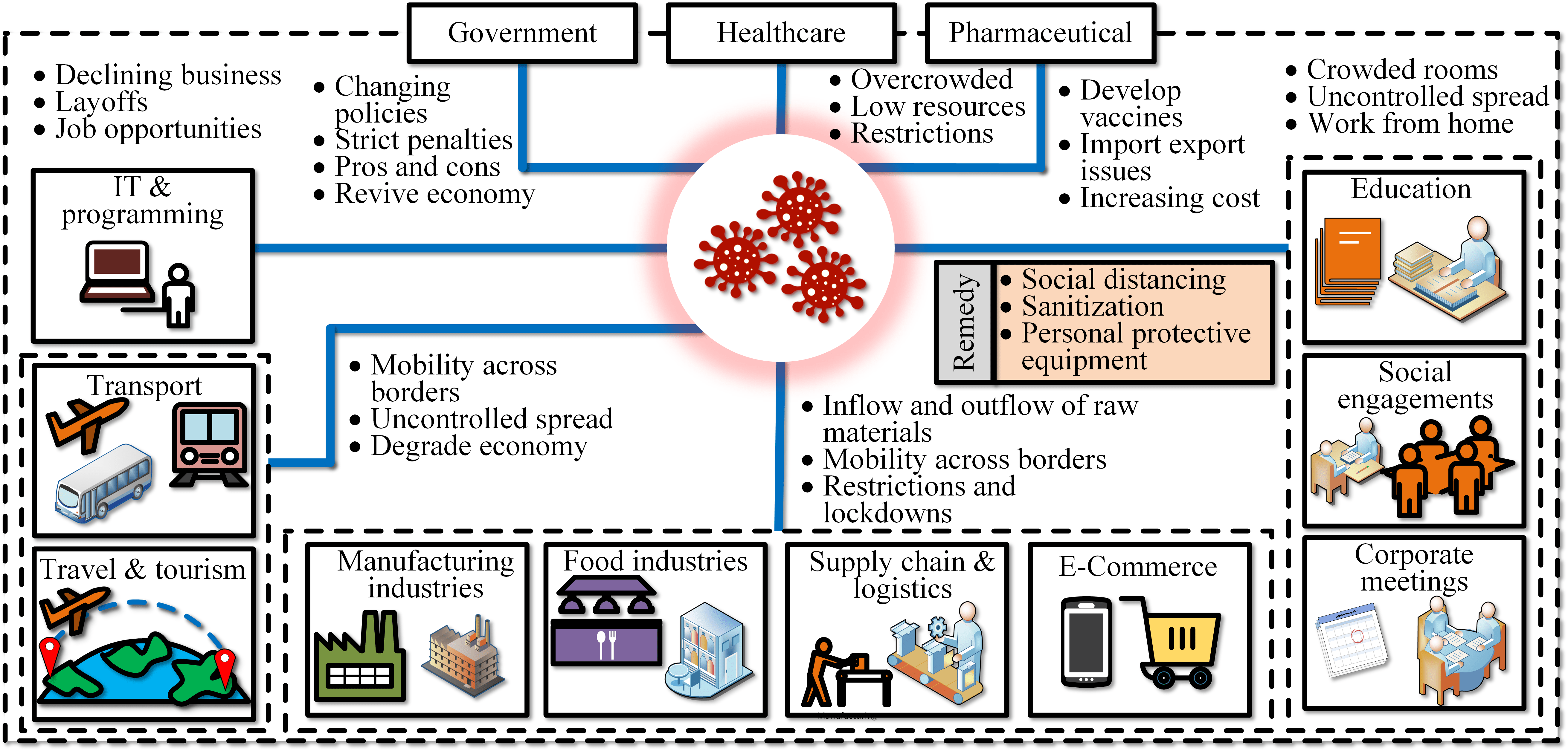
In this paper, we provide a comprehensive review of the possible IoT-based solutions that have the capacity of combating the COVID-19-like viruses. We highlight the societal impacts due to pandemics and identify the specific lacunae in current IoT solutions. We also provide comprehensive detail on how to overcome the challenges along with directions towards the possible technological trends for future research.
Read More PDF CitationEaves: An IoT-Based Acoustic Social Distancing Assistant for Pandemic-Like Situations
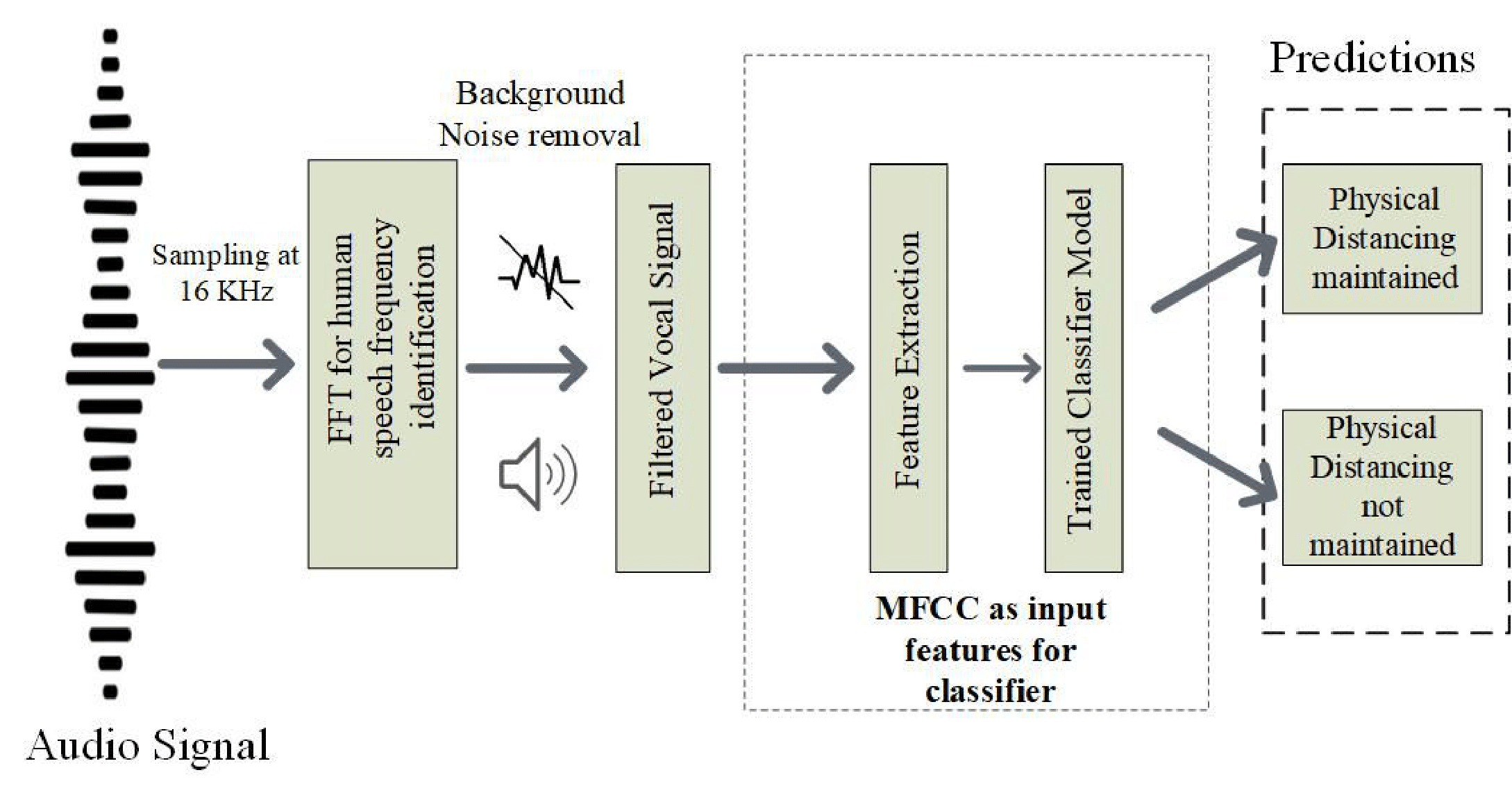
In this article, we propose an IoT-based acoustic solution – Eaves – for ensuring social distancing in public areas during pandemic-like situations. We use audio to ensure social distancing. The varying amplitude of the audio signals from different distances is the crux of the proposed method.
Read More PDF CitationBio-nano Sensor-based Healthcare System
Catastrophic Collision Phenomenon

This work analyzes and models the catastrophic collision — a phenomenon. Such phenomenon exhibits recurrent collisions of femtosecondlong pulse symbols emanating from the nanodevices in a WB2N.
Read More PDF CitationEvolution of WBAN
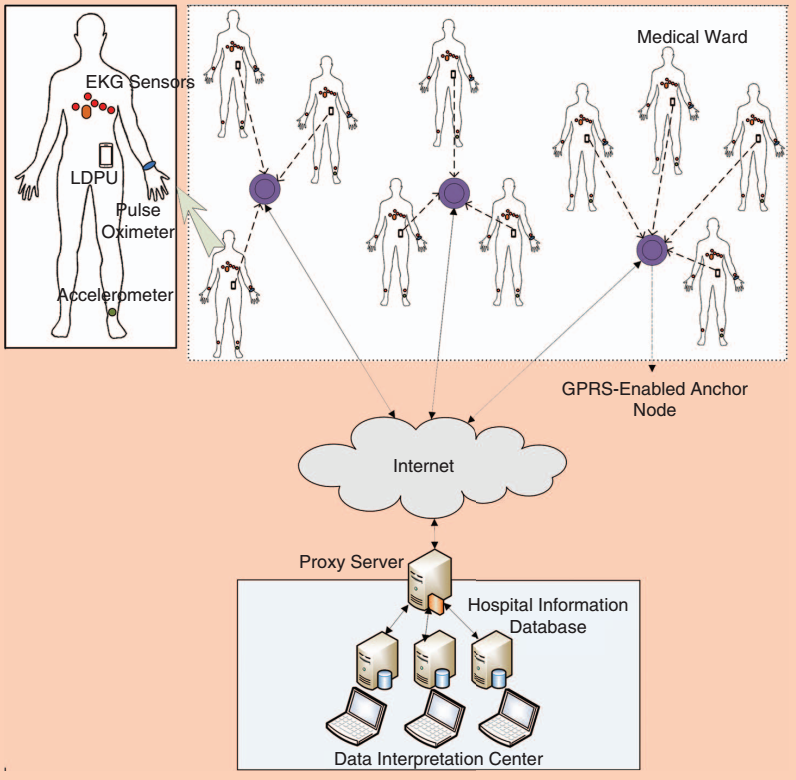
This work outlines the evolution of WBANs in the context of modern health care and its convergence with nanotechnology.
Read More PDF CitationEnergy Management
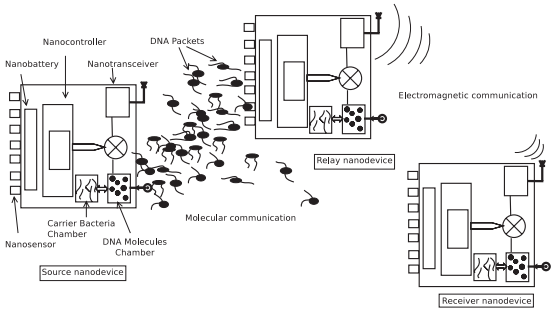
This work envisage the architecture of Green Wireless Body Area Nanonetwork (GBAN) as a collection of nanodevices, in which each device is capable of communicating in both the molecular and wireless electromagnetic communication modes. They specifically address the problem of energy management in a ubiquitous healthcare monitoring scenario and formulate it as a cooperative Nash Bargaining game.
Read More PDF Citation